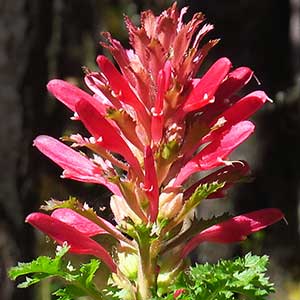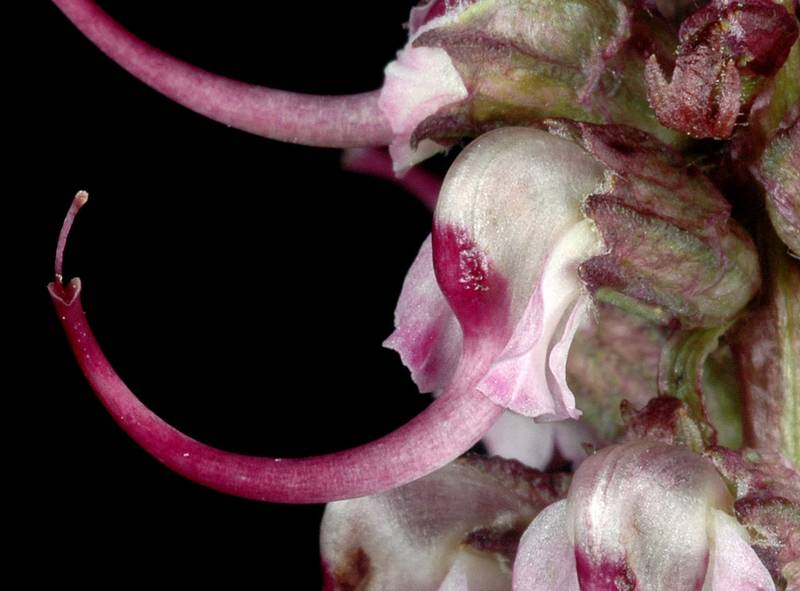Pedicularis densiflora
Pedicularis groenlandica
bull elephant's-head, elephant's head
Basal leaves 5-25 cm. long, the blade slightly longer than the petiole, pinnate, the leaflets narrow, sharply serrate;
cauline leaves similar, alternate, gradually reduced upward.
Inflorescence a fairly dense, spike-like raceme, much elongate, the bracts shorter than the flowers, at least the lower cleft into narrow segments;
calyx lobes 5, short, entire, sub-equal;
corolla pink-purple to nearly red, 1-1.5 cm. long, bilabiate, the upper lip short and strongly hooded, tipped with an elongate, slender, upturned beak; lower lip 3-lobed, rather small;
stigma capitate.
Capsule glabrous, flattened, curved.
Pedicularis densiflora
Pedicularis groenlandica
Occurring on both sides of the Cascades crest and in the Olympic Mountains in Washington; Alaska to California, east to the Rocky Mountains.
- Local floras:
BC,
CA,
OR,
WA
- Local Web sites:
CalFlora,
CalPhotos,
Flora NW,
PNW Herbaria,
Turner Photog.
WildflowerSearch
iNaturalist (observations)
USDA Plants Database
- LBJ Wildflower Center
- SEINet
- Plants of the World Online
- Encyclopedia of Life
- Wikipedia
- Google Image Search



